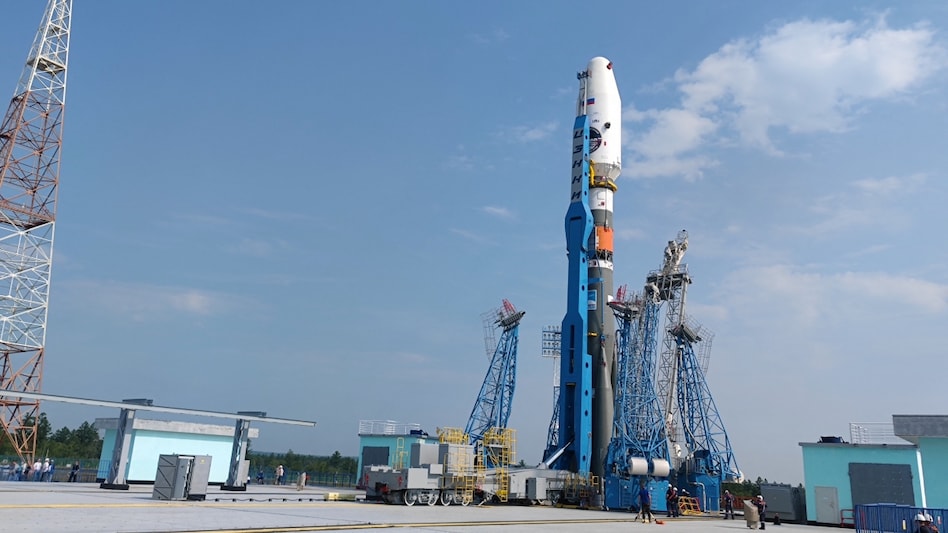 The Soyuz-2.1b rocket booster with the lunar landing spacecraft Luna-25 is lifted on the launchpad ahead of its upcoming launch at the Vostochny Cosmodrome in the Amur region, Russia
The Soyuz-2.1b rocket booster with the lunar landing spacecraft Luna-25 is lifted on the launchpad ahead of its upcoming launch at the Vostochny Cosmodrome in the Amur region, Russia  The Soyuz-2.1b rocket booster with the lunar landing spacecraft Luna-25 is lifted on the launchpad ahead of its upcoming launch at the Vostochny Cosmodrome in the Amur region, Russia
The Soyuz-2.1b rocket booster with the lunar landing spacecraft Luna-25 is lifted on the launchpad ahead of its upcoming launch at the Vostochny Cosmodrome in the Amur region, Russia Amid its conflict with Ukraine, Russia is embarking on a renewed lunar mission. A rocket readied with the Luna-25 spacecraft has taken flight, marking Russia's re-entry into lunar exploration after a hiatus since 1976. The mission's ambition is to successfully land the exploration vehicle on the moon's southern pole, with the aspiration of uncovering water iced beneath the lunar surface.
All this is happening right when India's third unmanned lunar endeavour, the Chandrayaan-3 spacecraft, is also on its way to the moon and captured breathtaking visuals of both the Moon and Earth during its voyage.
The rocket blasted off from the Vostochny cosmodrome, 5,550 km east of Moscow, at 2:11 a.m. on Friday Moscow time, with its upper stage boosting the lander out of Earth's orbit toward the moon over an hour later, Russia's space agency Roscosmos confirmed.
A watershed moment came in 2020 when NASA verified the presence of water molecules in sunlit sections of the moon's exterior. The potential availability of salvageable water holds immense promise for lunar exploration, offering sustenance for future human missions, fuel through hydrogen extraction, and even the potential for agriculture.
Also Read Hollywood vs AI: Why famous actors including Oppenheimer, Barbie cast are on strike
Russia's foray into space serves not only as a scientific venture but also as a strategic move to reestablish itself as a significant global player, undeterred by Western sanctions stemming from the 2022 Ukraine invasion. Symbolically harking back to the Soviet Space Program, the vessel's name, Luna-25, pays homage to its predecessor, Luna-24, which, in 1976, spent 13 days collecting lunar samples.
Luna-25 is projected to traverse the lunar distance in five days, subsequently spending an estimated five to seven days in orbit before making a lunar touchdown.
For the subsequent year, Luna-25 is anticipated to conduct an array of experiments, leveraging its 31 kg of research equipment. Among its tools is a scoop capable of procuring samples from depths of up to 15 cm (six inches) as it embarks on the quest to unveil frozen water reserves.
Also Read
Battle of the billionaires: Elon Musk vs Mark Zuckerberg cage match could make over $1 billion
Google appeals to Supreme Court to quash antitrust directives on Android in India
Copyright©2023 Living Media India Limited. For reprint rights: Syndications Today